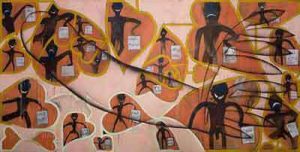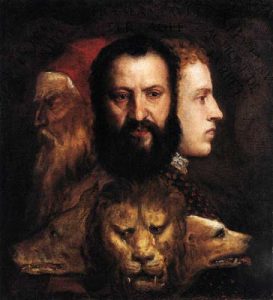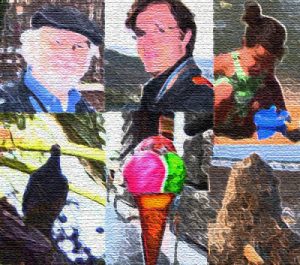 The function of heuretics is to create a discourse on method: The method you need has to be generated even while you are applying it. Blogs are a good support for this generative practice, since they enable a developmental unfolding. A project experiment is set (the design of konsult for EmerAgency catalysis of public policy dilemmas), a set of resources are chosen as generators, assigned to slots in the CATTt, and each resource is inventoried in turn, in a sequence from which emerges an intertext, to be synthesized and integrated into a working recipe. Blogs document this process, inventorying each resource as it is encountered, itemizing instructions from the operating features of the resource, testing them in part, while moving through the sequence, integrating instructions for further testing. The result is both a commentary on and demonstration of the desired poetics.
The function of heuretics is to create a discourse on method: The method you need has to be generated even while you are applying it. Blogs are a good support for this generative practice, since they enable a developmental unfolding. A project experiment is set (the design of konsult for EmerAgency catalysis of public policy dilemmas), a set of resources are chosen as generators, assigned to slots in the CATTt, and each resource is inventoried in turn, in a sequence from which emerges an intertext, to be synthesized and integrated into a working recipe. Blogs document this process, inventorying each resource as it is encountered, itemizing instructions from the operating features of the resource, testing them in part, while moving through the sequence, integrating instructions for further testing. The result is both a commentary on and demonstration of the desired poetics.
What are the operating features available in the CATTt for the seminar?
Theory: Avatar Emergency

- Rationale: “Prudence” as a “time virtue,” good judgment integrating experience of past and present for a decision promising optimal outcomes in the future. Prudence must be updated for electrate conditions of dromosphere.
- Relay (Model): Titian, Allegory of Prudence — the artist’s decision resolving a family dilemma, celebrated in a painting associating each relevant person with an animal selected from an iconographic tradition.
- Encounter: Titian updated by Francesco Clemente for a museum exhibit of artists’s appropriations of famous works from the archive (collection). This update opens up the original relay to further invention.
- Epiphany: Poetics of sudden thought (encounters between microcosm/macrocosm) established in both religious and secular versions, codified in modernist poetry as correspondences, objective correlative and the like. Some ordinary feature of quotidian circumstances (external setting) triggers (catalyzes) a feeling of recognition, of identity, as a figure (tenor) of Mood (Stimmung, Heidegger).
- Memory: Catalysis (outside environment triggering inside recognition) happens through memory: some past Moment of experience, enduring in subconscious memory, matches some sensory aspect of the present situation. Ulmer reflects upon the formative events of his year studying in Spain, including enduring memories of a night sleeping outside with a companion in an olive orchard, as well as his adoption of the diaries of Franz Kafka as a tutor author for his own journals that year.
- Event: Ulmer constructs an allegory through reflection on family vacations, situations in which the family travels to Florence Italy, Key West Florida, and Ponte Vedra Beach.
- Image/Pastiche: the allegory is formalized in a collection of three snapshots (White-crowned pigeon, Gelato sign, sand castle) associated with three members of the family) plus anecdotes about the events associated with each image. In addition, Ulmer composes a pastiche of an aphorism selected from Kafka’s Blue Octavo Notebooks, offered as “motto” for the allegory, using Kafka’s form and style to express a philosophical version of the commemorated judgment.
- Ubimage: it may be worth putting a point on this outline: konsult is designed specifically as an electrate contribution to the technics of ubiquitous-pervasive computing.
 The further step of using the CATTt is to extrapolate from these operating features, to adopt them as forms only, substituting one’s own materials suggested by the relay, to test an allegory of prudence (aesthetic judgment) drawing on equivalents of the features found in the source Theory.
The further step of using the CATTt is to extrapolate from these operating features, to adopt them as forms only, substituting one’s own materials suggested by the relay, to test an allegory of prudence (aesthetic judgment) drawing on equivalents of the features found in the source Theory.
The related point is that the exercise defined in AE is not left as is, but is modified by intertextual synthesis with subsequent resources: Contrast (Universal Experience) and tale (Once). Universal Experience develops the setting of the encounter as within the institution of tourism (the community already has an aesthetic structure for the gaze or collective attention –attraction). Once (Wenders) as tale specifies how to represent the allegory in photography and anecdotes, including Einstellung as an extension of epiphany into photography.

Leave A Comment
You must be logged in to post a comment.